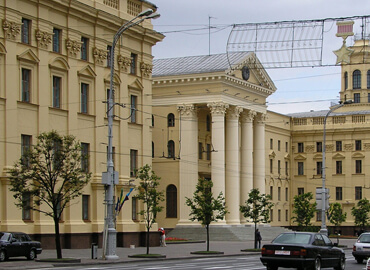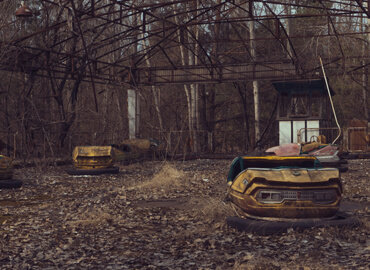Russia’s movements to create an energy crisis in Europe show that if the political regime in Belarus changes, gas and oil supplies may be shut down or energy supplies may be restricted. Therefore, when assessing energy security, such a scenario should be considered.
If energy supplies are restricted, it would be a priority to ensure end consumption of all types of fuels and thermal energy. In Belarus, 100% of consumers have access to electricity. Consequently, any restriction at the level of end consumption will be replaced by electricity. The efficiency of electricity use by primary fuel will be much lower (for example, electric heating or the use of electric stoves consumes much more primary energy than gas or firewood). In any scenario then the volume of supply of fuel and energy resources for end consumption must be maintained and the encouraging of the use of local fuels will have a positive impact on the overall reliability of energy supply.
1. Baseline scenario
Here we provide a forecast of the state of the energy system following the start-up of two nuclear power plant units (NPPs), but at a normal level of energy supply. This scenario will be considered the baseline. Modeling results in other scenarios will be compared against this baseline. The launch of a NPP reduces natural gas consumption by approximately 4 billion cubic meters. The primary reduction of gas consumption is observed in the operation of condensing power plants (CESs), which significantly reduce electricity production. In addition, electricity production at thermal power plants (CHPPs) is slightly reduced and heat production at heating plants is increased.
2. Scenario without a natural gas delivery
If natural gas supplies were cut off from end consumption, the change would be seen only in the reduction of exports. The export of electricity would cease. Following the launch of the NPP and the desynchronization of the energy systems of Ukraine and Belarus, however, export would already be rendered impossible. Consumption of natural gas for non-energy needs would be be limited, but this restriction would not be more than 10%. Biomass export would be significantly reduced, as it maximizes the use of local resources for local needs.
The operation of the fuel and energy system would change significantly. Thermal power plants would almost completely switch to the use of fuel oil. Heating plants would also partially switch to the use of fuel oil as much as possible, but here the opportunities for doing so would be much lower (a reduction of consumption by about 30%). Thermal power plants would run only on fuel oil.
This scenario does not take into account restrictions of oil supplies, therefore instead of export decline we see an increase in imports of oil products. Oil supplies from Russia increase from 15.3 to 22.7 million tonnes, which just about covers the technical limitations of Belarusian oil refineries.
The implementation of this scenario would require gas imports from Lithuania totaling 1 billion cubic meters and an additional 5 billion cubic meters of gas from Poland. In this case, storage facilities would be completely filled (about 1 billion cubic meters).
3. Scenario of a complete power cutoff from Russia
In this scenario, imports of both oil and gas from Russia are ceased. End consumption of energy resources in this scenario is provided for all consumer groups and all types of fuel, but the export of all petroleum products stops.
The operation of the nuclear power plant and condensing, thermal, and heating plants for this scenario remain to a great extend unchanged when compared to the scenario without gas supplies. Oil refining is reduced to 12.2 million tonnes.
The situation with gas supplies is similar to the previous scenario – 1 billion cubic meters of gas from Lithuania and other 5 billion cubic meters from Poland. Oil supplies will be mainly provided through the Baltic states – 6 million tonnes – a and through Poland – 3 million tonnes. Supplies from Poland can be conducted through the main oil pipeline Druzhba in reverse. Supplies from Lithuania can only be conducted by rail. To ensure deliveries of 6 million tonnes annually requires about 5 trains per day. This is a considerable amount, although the railroad can easily handle such volumes. There may be restrictions on capacity for unloading oil to refineries, especially given the need for parallel loading of petroleum products, but in the case of such restrictions it is possible to purchase fuel oil right away on the world market. In this case there would be no limitation on the capacity for taking in oil and unloading.
4. Additional possibilities
The modelling did not include electricity supplies from Lithuania. Currently supplying electricity is impossible for political reasons, but following a change of government in Belarus, we could receive 1GW of power or 8.7 billion kWh. Lithuania refused to import electricity from Belarus due to the launch of the nuclear power plant, but it is legally possible to export electricity from Lithuania to Belarus.
There are possibilities of receiving oil from Kazakhstan through Russian pipelines. Likely, this mechanism will remain functional even in the event of restrictions on oil supply, as it is today for oil supplies to Germany from Kazakhstan. On the other hand, ending oil imports from Russia was initiated by the Germans, not the Russians, and it is likely that, if Russia moved forward, Kazakhstan would not be able to supply oil to Germany either.
The model did not consider capacity in other countries, although the current level of development of EU’s gas transportation system allows for additional supplies of natural gas to Poland, for example from Germany, which could then be exported to Belarus.
5. Administrative and legal risks
In addition to technical limitations, there are risks of administrative and legal restrictions. In 2011, the second half of Beltransgaz was sold to Gazprom. Since then, all the main gas pipelines in Belarus, as well as underground gas storage facilities, belong to the Russian gas monopoly.
This situation suggests that in the event of politically motivated shutdown of natural gas supplies from Russia, storage facilities and the gas housed there may also be made inaccessible for the managing of the gas transmission system.
Moreover, by operating Gazprom Beltransgaz Belarus (the new name of Beltransgaz, which was sold to Gazprom), Gazprom can refuse to buy gas from alternative sources. There are many ways this could go, ranging from an open refusal of purchases to sabotaging the gas purchase process as a delay in the timing of payments, negotiations, and signing contracts. In this case the possibility of transferring the operational management of Gazprom Beltransgaz Belarus to act in the interests of Belarus would need to be foreseen.
6. Preventive measures
Preparations for such events could be started today. To this end, several measures that could improve the reliability of gas supply to Belarus in the event of restrictions on gas supplies from Russia should be implemented:
- Hold consultations with operators of the Lithuanian and Polish gas and oil supply systems to confirm the possibility of supplying estimated volumes of gas and oil to Belarus using their infrastructure.
- Conclude high-level agreements (memorandums, framework agreements) on procedures for the treatment of gas supplies, pricing principles, and other legal and technical procedures for oil and gas supply.
- Consult with lawyers who specialize in cases of Stockholm arbitration regarding options and prospects for revising the agreement on the sale of Beltransgaz and the restrictions on gas supply set out therein or obtaining compensation for stopping supplies of natural gas from Russia.
7. Areas of infrastructure development
In addition to emergency measures, measures to develop the energy supply infrastructure and the implementation of measures to reduce dependence on imports can already be discussed:
- Establishing of a liquefied gas terminal on the coast of the Baltic Sea in cooperation with other countries or on its own. The most attractive sites are Lithuania (minimum transport leverage) or Poland (availability of sufficient transport capacity)
- Restoring or establishing of a new Novopolotsk-Klaipeda oil pipeline to supply oil from Lithuanian and Latvian ports to Novopolotsk refinery. The presence of an interconnection between the Unecha- Polotsk and Unecha-Mozyr oil pipelines will make it possible to supply the Mozyr oil refinery with 50% of its installed capacity.When developing these projects, Ukraine’s interests should be considered, as they could also be used to provide oil and gas supplies to Ukraine.
Moreover, there are several measures that must be implemented in any oil and gas supply situation. The main objective in terms of both energy security and environmental impact will be the development of renewable energy sources, such as wind and solar energy. However, difficulties with maintaining the balance of power in Belarus’s energy system will allow for an increase in energy consumption from renewable sources only if energy storage and possibilities for substituting energy generation at condensing power plants are developed, which would likely involve a transition to the use of heat pumps to maintain heat supply. This would necessitate the modernizing of the city’s electrical cable networks.
Материал доступен на русском языке: Энергоснабжение Республики Беларусь в случае остановки поставок энергоресурсов из Российской Федерации











